Today, we’re buzzing into the economics of bee farming.
Hot off the heels of World Bee Day, we’ll find out how bee farms make money, who they sell to, what the costs look like, and explore a few interesting bee-related startups.
Let’s go 👇
P.S. There are a bunch of bee puns in this issue, but I promise it’s not a swarm.
Table of Contents
How do bees make honey?
There are over 20,000 species of bees in the world. But when it comes to honey, there’s only one that matters — the aptly named honeybee (Apis family).
Bee colonies can fit up to 60,000 employees, each with a specific daily task. Worker bees are the laborers of the crew, and fly miles away from the hive looking for top-shelf flowers to pollinate.
When they find a hot lead, they tell their colleagues the exact location through a series of dance moves, which (incredibly) pinpoints the source of the forage in relation to the sun and the hive.
Bees use their proboscis (tongue) to suck up the sweet nectar from the flower. The worker bee’s gut breaks the nectar into simple sugars and returns it to the hive.
Finally, the nectar is stored in a hexagonal beeswax chamber. The bees dry the nectar by flapping their wings like crazy, completing its transformation into honey. 🍯

Honey supply and demand
America has about 120,000 beekeepers. These farms are responsible for 2.7 million bee colonies that produce an average of 1.5m pounds of honey per year.
That’s just 2 grams of honey per person per year. But the average American adult eats 2 grams of honey per day.
So what makes up the difference? Imports.
Imports are now a majority of total US honey supply. In 2020, imports accounted for 70% of all honey consumed in the United States, up from 54% in 2010.
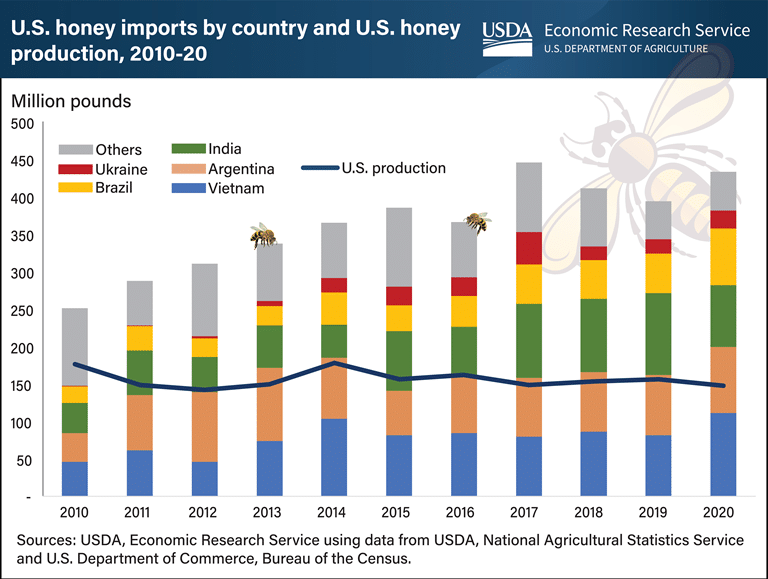
Bee farming 101
Bee farmers with less than 300 colonies are considered part-timers. About 90% of all beekeepers fall under this bucket, producing 40% of the nation’s honey.
This means the remaining 60% of honey is produced by less than 10% of all beekeepers. Adee Honey Farms is the biggest player in North America — they own 92,000 hives and over 3.5 billion bees.
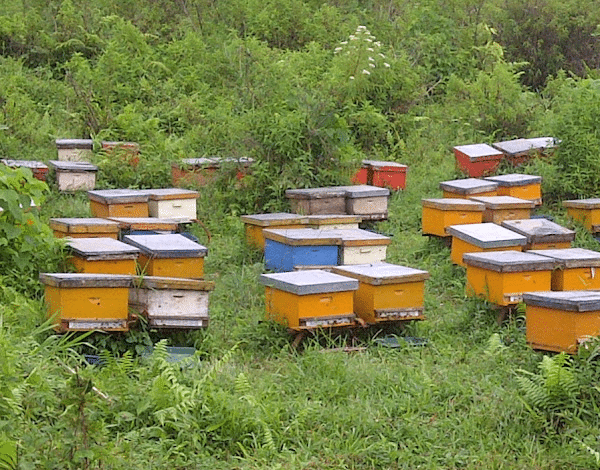
How do bee farms make money?
A colony can produce between 60-100 pounds of honey per year, but it varies like crazy.
Honey yield is determined by:
- Weather and environment
- Beekeeper skills and equipment
- Pests, predators, and parasites
- Bees quitting their jobs and absconding (more on this later)
Commercial products usually wholesale for $2-5 per pound, while organic honey can fetch $10+ per pound. The USDA’s 2023 National Honey Report shows average wholesale prices have remained stable over the past few years at around $5.75 per pound.
Given a colony produces roughly 80 pounds of honey per year, the average farmer grosses $460 per colony per year. You’d need about 67 colonies to match the median farmer salary of $31,000 per year.
Other bee products you can sell
Honey isn’t the only product you can get from bees.
Beeswax
Up to a pound of beeswax per colony can be harvested every year. It’s used in cosmetics, candles, and soaps.
Pollen traps
Pollen traps sell for $3-5 per ounce, and a big colony can collect 500-1,000 ounces of pollen per year. It’s worth about $3,000 annually, but installing a trap slows honey production.
Royal jelly
Royal jelly is produced by queen bees every few days. It’s increasingly used to treat anxiety and depression, but it’s not a great option. Specialized colonies can yield about 2 pounds of royal jelly per year, worth around $250.
New colonies
Experienced beekeepers sell entire colonies for $150 each.
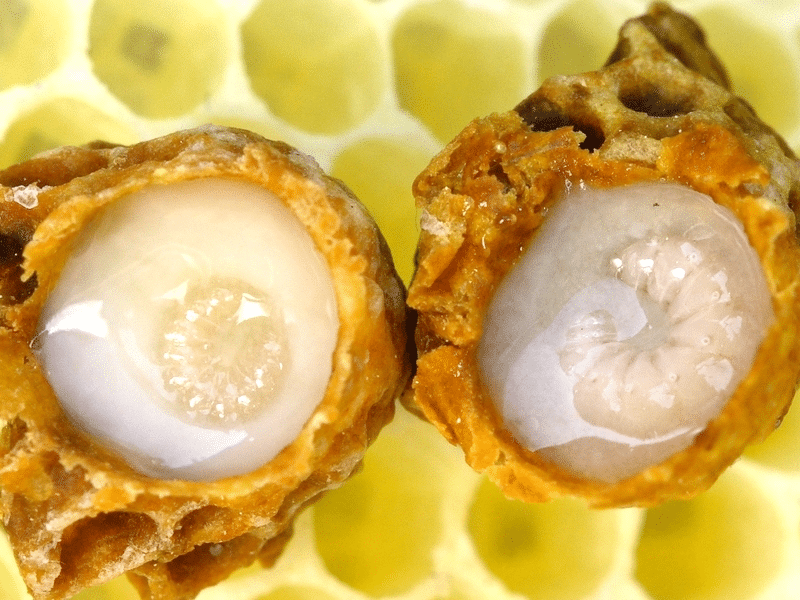
How do you get started beekeeping?
There’s no licensing in this world, although some places require a permit to keep bees. And you don’t technically need any training to open your own bee farm. You can just go for it.
But it’s probably a good idea to shadow an expert before opening a bee farm. As you can imagine, beekeepers get stung all the time. You get used to it. It becomes normal.
Some pro beekeepers are so in-tune with their colonies that they don’t even bother wearing suits.
Just like with real estate, location is everything:
Beekeeping land is often cheap, and you don’t need that much of it. Heck, if you have a dense garden, you can get to work in your own backyard
Bee colonies don’t care if they’re located next to each other. (Bees look the same to us, but they all “smell” different.)
You need:
- Water and flowering plants within a 5-mile radius
- Shaded area during summer (most people use artificial shading)
- Avoid areas that use insecticides nearby
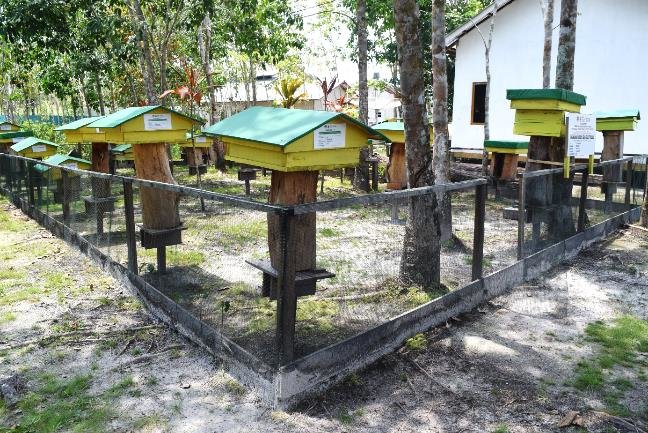
How to buy bees
Bee colonies are sold by bee breeders all around the world. There are all sorts of different types.
- Nucleus bees are expensive but come with a fully-functional hive of a few thousand bees.
- “Packaged” bees only come with a queen and a few worker bees. This is the cheaper option, and the bees have a penchant for flying away upon arrival.
It is legal for bees to be shipped through the mail, but there are some interesting rules. Queen honeybees can be shipped by airmail, and can be joined by up to 8 worker honeybees (females only)
Watch how bees are shipped through the mail, it’s pretty genius:
How to buy a hive
Technically worker bees can make hives for you, but they’ll take forever. Just buy the hives yourself. This makes it much easier to control your bees and access your honey.
The most popular North American beehive is the Langstroth. You can buy these pre-assembled from bee retailers. Even Amazon sells them.

How much does it cost to start bee farming?
It’s not too bad.
According to Bee Keeping for Newbies, expect to pay about $500 for a colony, and $200 – $400 for each additional colony, depending on how many you want to set up.

Interestingly, this number ($473) is roughly what you can earn per year once the colony gets going. (Remember, bees don’t produce honey or other products during the hive’s first year). So colonies have a 1-2 year payback period.
- Maintenance and other expenses are about $150/year per colony
- After year one, each colony profits about $300 – $400/year
- To turn this into a million-dollar business, you’d need 2,000+ colonies, and about $1.3m in upfront capital.
Most expensive kinds of honey on the market
Elvin honey
One type of honey that stands head and shoulders above the rest. And it has a name to match its mystique.
Elvin honey is by far the most expensive honey you can buy. It comes from Turkey’s Artvin Province, where it’s known as “the nectar of the gods.”
It’s worth over $5,000 per kilo. On par with the wholesale price of cocaine.
But why is it so expensive? Well, it can only be found in one place: 1,800 meters deep in a cave. The unique mineral composition of the cave gives the honey a flavor that cannot be replicated anywhere else on Earth.
Mad honey
On a remote mountainside in Nepal, giant bees produce red-tinged honey with psychedelic properties.
Smash a spoonful to feel something between a low dose of psychedelics and marijuana. (Or so we’ve heard)
People rappel up and down treacherous cliffs to scoop it up. A kilo of the stuff is worth $400.
This documentary from Vice was pretty cool:
Are the bees really disappearing?
Unfortunately, the bee industry isn’t all hallucinogens and profitable backyard farms. Honey bees are, in fact, disappearing.
It started in 2006, when several beekeepers across the US noticed that 30+% of their bees were suddenly missing. No bee corpses, either. They were just gone. Disappeared. Flew away.
It turns out that, yes, bees are absconding and dying.
The cause is due to factors known as “the three Ps”:
- Pesticides. Large-scale agricultural operations use toxic pesticides to clear weeds and other waste. Unfortunately, this also kills an unintended victim — wild bees.
- Parasites. Globalization has caused the introduction of pests and parasites into ecosystems where they don’t belong. For example, the Varroa destructor latches onto a honey bee, injecting an enzyme that turns the bee’s insides into mush. The parasite slurps it up and hunts for the next target.
- Poor nutrition. Urban sprawl, pollution and industrialization have dramatically reduced the amount of high-quality pollen for bees to access. It’s like a human living off ice cream — you won’t starve to death, but you’re not healthy.
Bee startups making a buzz
Luckily, several bee startups are striving to make a change.
Beewise
Beewise is probably the biggest name in the game.
These guys have patented robotic beehives that can be managed remotely. The program costs $400 a month, but each house comes with 24 colonies (!), so the economics work well for buyers.
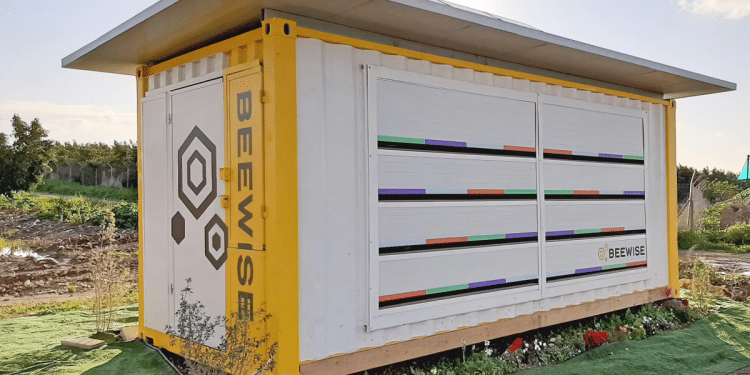
Everything in the Beewise hive is automated, so keepers don’t need to worry about the 30%+ of bees that randomly abscond or perish. According to the company, they save 2.7 bees for every penny they make.
So far Beewise has raised over $120 million in funding, including an $80m round led by VC firm Insight Partners.
Vatorex
Remember earlier in the piece, where we talked about parasites turning bees into soup?
Vatorex is an early-stage start-up that’s developed a product to safely combat varroa mites.
For decades, beekeepers were stuck between a rock and a hard place — treat mite infestations with deadly pesticides, or let their colonies fall prey to vampiric parasites.
Vatorex designed a system that can be attached directly to a hive. Instead of deploying dangerous chemicals, it heats up chambers to a temperature perfect for killing off mites without bothering the bees.
Since 2016, Vatorex has raised over $3m in funding and sold their products to major bee farm retailers across the United States and Europe.
Closing thoughts
Honeybees play a pivotal role in nature. 30% of all food humans consume is pollinated by bees. Without them, ecosystems would completely collapse.
It really seems like a manageable side hustle to get into. And I always favor any investment with a 1-2 year payback. This is why I love investing in stuff like websites and newsletters.
But despite the fact that production in the US has plateaued, honey and bee byproducts earn less per acre than many crops. You need thousands upon thousands of colonies to make decent money.
It’s a long-term investment that’s good for the world.
Get into it because you want to, not for the returns. 🐝
Further reading
- The five largest-producing honey countries in the world (go New Zealand)
- How do you know if your honey is organic? It turns solid.
- Local towns or cities often have a honey directory where beekeepers can add their names and contact details.
Disclosures
- This web version of this article contains an Amazon affiliate link (and only the web version, because for some reason Amazon doesn’t let you put affiliate links into emails)
- We have no bees, bee farms, or honey in our ALTS 1 Fund. (But if you have a deal, we’ll take a look!)











